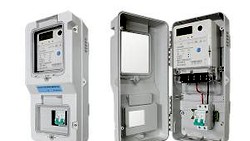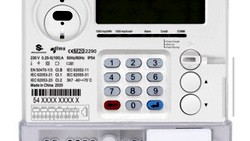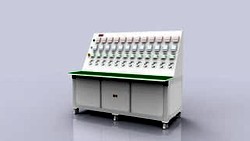Peak load management is a critical aspect of energy consumption for commercial enterprises, and in this article, we will explore why it holds significant importance in managing energy costs. So, let's delve into the world of peak load and its impact on businesses.
What exactly is peak load, you may wonder? Well, during certain hours of the day, typically in the morning and evening, there is a surge in electricity demand. This surge puts a strain on the power grid, and to meet this increased demand, peaker plants that are designed to operate for a limited time kick into action. However, during these peak load periods, electricity rates soar due to the additional costs associated with maintaining grid reliability during these crucial hours.

(credit CLOU)
For businesses, peak load becomes a matter of concern due to the potential financial implications. If a significant portion of a company's electricity usage occurs during peak load periods, they may face substantial demand charges from their utility provider. These demand charges can make up a significant percentage, ranging from 20% to 50%, of the overall electricity bill.
But here's the good news: Businesses have the power to mitigate these costs by implementing strategies to shift their heavy load away from peak hours. Studies have shown that by simply shifting 10 – 15% of heavy load to off-peak hours, businesses can save an impressive 5 – 10% on their annual electricity costs. Now that's an opportunity worth exploring!
So, how can businesses effectively manage their peak load and keep their electricity costs in check? Let's shed some light on a few solutions:
- Smart Scheduling
By submetering their operations, businesses can identify non-critical processes that can be rescheduled to off-peak hours. By strategically adjusting their operations, they can avoid demand charges associated with peak load periods. - Energy-Efficient Equipment
Upgrading to energy-efficient equipment, such as LED lighting, can significantly reduce electricity usage during peak load periods. Not only does this save energy, but it also helps to reduce peak demands and lower overall electricity costs. - Embracing Solar Power
Implementing on-site solar generation can be a game-changer for businesses. By generating electricity during peak load periods, businesses can reduce their reliance on the grid when demand and costs are at their highest. Solar power offers a sustainable and cost-effective alternative. - Leveraging Smart Technology
Installing smart thermostats and controls allows businesses to pre-cool their buildings before peak load periods using off-peak power. This intelligent approach helps trim costs while maintaining a comfortable environment for employees.
By adopting these peak load management strategies and investing in energy-saving technologies, businesses can make a significant impact on their energy costs while supporting grid reliability. Understanding the dynamics of peak load is the first step towards empowering businesses to make informed decisions and optimize their energy consumption.
If you have any inquiries or need further information about managing peak load with sub-metering or demand meters, please do not hesitate to reach out to us. We are here to assist you and welcome your valuable thoughts and comments.
Thank you for reading.
Until then, keep shining bright and managing your peak load effectively!





All comments are moderated before being published. Inappropriate or off-topic comments may not be approved.